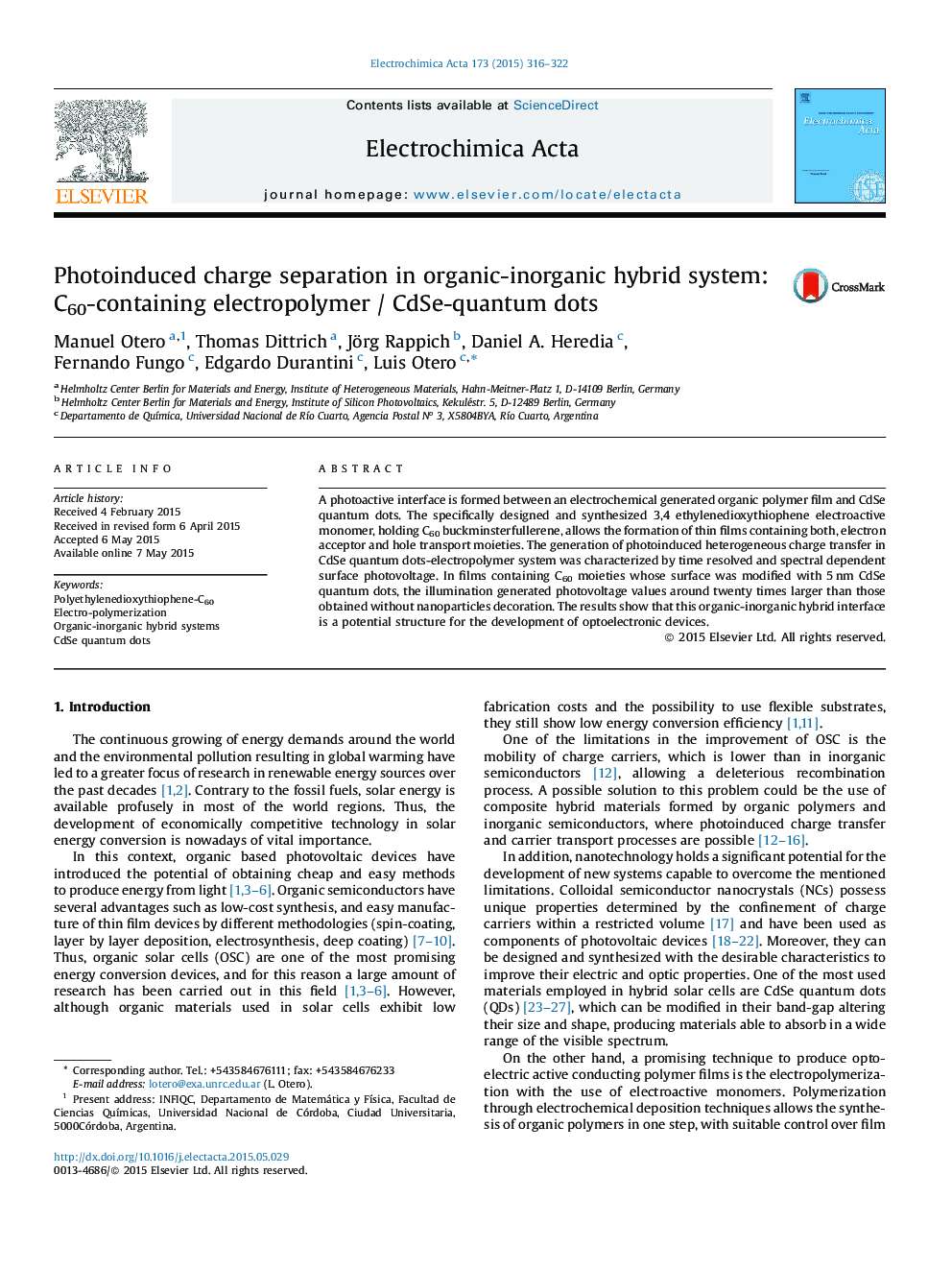| Article ID | Journal | Published Year | Pages | File Type |
|---|---|---|---|---|
| 183790 | Electrochimica Acta | 2015 | 7 Pages |
•Modified ethylenedioxythiophene allows the formation of an electropolymer holding C60.•Polymer decoration with CdSe QDs produces a photoactive organic-inorganic interface.•Photoinduced electron transfers were analyzed by surface photovoltage.•The interface is a potential structure for the development of optoelectronic devices.
A photoactive interface is formed between an electrochemical generated organic polymer film and CdSe quantum dots. The specifically designed and synthesized 3,4 ethylenedioxythiophene electroactive monomer, holding C60 buckminsterfullerene, allows the formation of thin films containing both, electron acceptor and hole transport moieties. The generation of photoinduced heterogeneous charge transfer in CdSe quantum dots-electropolymer system was characterized by time resolved and spectral dependent surface photovoltage. In films containing C60 moieties whose surface was modified with 5 nm CdSe quantum dots, the illumination generated photovoltage values around twenty times larger than those obtained without nanoparticles decoration. The results show that this organic-inorganic hybrid interface is a potential structure for the development of optoelectronic devices.
Graphical AbstractFigure optionsDownload full-size imageDownload as PowerPoint slide
